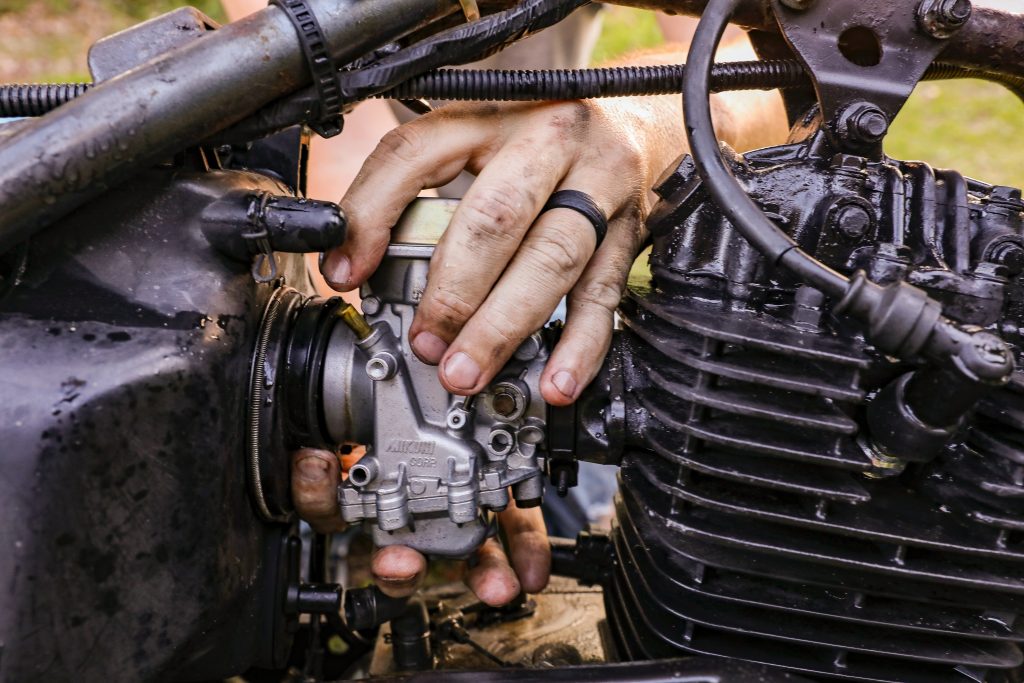1974 Jaguar E-Type
Known as the E-Type Series, Jaguar manufactured it from 1961 to 1975 and has been dubbed “one of the most beautiful automobiles ever built.” As a result, it’s understandable that the restoration had to occur without compromising the car’s original identity. For those of you antique car enthusiasts out there, this is undoubtedly one of the most stylish modifications ever made to a 1974 Jaguar E-Type.
In its evolution from the XK120 to the XK150 and then back to the E-type 3.8, Jaguar’s sports cars appeared to hover between being enthusiast-driven road/race vehicles and comfortable, accommodating tourers. In the 1970s, the pendulum finally swung back to its original position. The evergreen E-type V-12 Series III of 1971-74 constituted a perceptible stride between the pure, manual-only early E and the opulent, automatic-only XJ-S of the decade before. Because of its position in the middle of the road, the Series III has been labeled as controversial; out of the factory, it is a powerful, polished GT, and with reasonable (or radical) contemporary improvements, it has become a sports car with capabilities much beyond those of its ancestors. It is entirely up to you how you will react to the 1974 E-Type.
Performance and Fuel Economy
It wasn’t until April 1971 that the E-type entered its last phase, with the launch of the Series 3 model line, which featured the brand new 5.3-liter V12 engine with 266 horsepower on board. It was initially designed for the Jaguar XJ13, a contender for the 1966 Le Man’s championship. The engine used in the 1971 E-type featured a single overhead camshaft per bank rather than the previously used two. At the time, it was the only V12 engine available for mass manufacturing anywhere around the globe.
The Jaguar E-Type Series 3 was available as an open two-seater and a 2+2 coupé in 1974, with the open vehicle now being produced on a larger wheelbase and the coupé. Even though a manual transmission was still available, most automobiles were equipped with an automatic transmission. A two-seater with a manual transmission attained a high speed of 146 mph (235 km/h) and went from zero to sixty miles per hour (97 kilometers per hour) in 6.4 seconds.
Specifications
- Height: 51 in
- Length: 184 in
- Width: 66.3 in
- Curb weight: 3373 lbs
Engine type: V12 naturally aspirated petrol
Fuel tank: 21.6 g

Jaguar Factory Service Manual
The original repair manuals for the 1974 E-type cover nearly every aspect of how the car is designed and operates. Accordingly, the factory original manuals were issued to licensed Jaguar dealerships for proper diagnostics and repairs. The vehicle’s purchase price does not include the service manual but should be consulted for any repairs.
- Diagnostic Protocols
- Vehicle Maintenance
- Specifications
- Capacities
- Servicing
The Jaguar E-Type service manual for the 1974 model year are vast and cover every aspect of the vehicle’s service and repair.
Design, Comfort, and Quality
The E-type also featured a three-plane crankshaft made of forged steel. With seven main bearings and wet cylinder liners, and it had a 9.1:1 compression ratio in its original configuration. Four Zenith-Stromberg 175 CD 2SE emissions-ready carburetors provided the copious amounts of fuel required. Its revolutionary Lucas OPUS electronic ignition system was adapted from Formula 1 racing experience to provide the required high performance.
Although massive projecting rubber bumper over-riders were installed on cars intended for the United States market (on the front in 1973 and both front and rear in 1974) to comply with local 5 mph (8 km/h) impact restrictions, those on European versions were far smaller. The side indicator repetitions on the front wings of US versions are also present. A very small number of six-cylinder Series 3 E-Types were made, which were very rare. These were included in the original sales process, but they were no longer manufactured due to a lack of demand. The V12 Open Two Seater and V12 2+2 were delivered to the customer with Dunlop E70VR 15-inch tires mounted on 15-inch wire or solid wheels from the manufacturer.
Frequently Asked Questions
How Fast is the E-Type?
Top speeds in excess of 180mph
What size engine did the E-Type have?
3.8L 265 bhp

